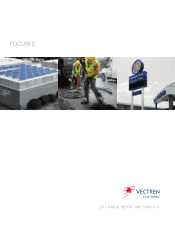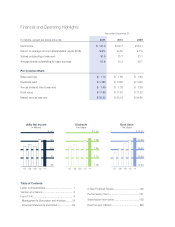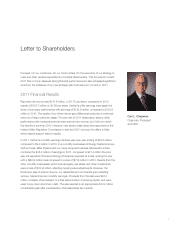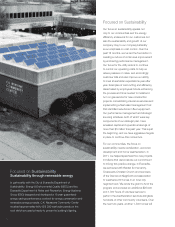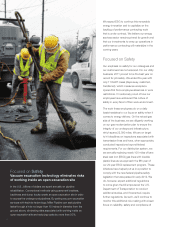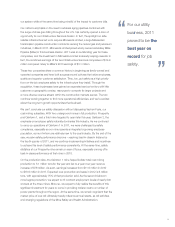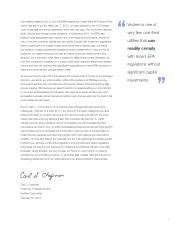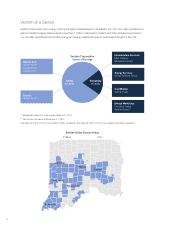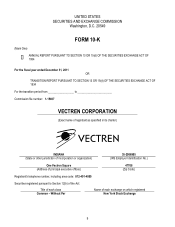Vectren 2011 Annual Report Download - page 9
Download and view the complete annual report
Please find page 9 of the 2011 Vectren annual report below. You can navigate through the pages in the report by either clicking on the pages listed below, or by using the keyword search tool below to find specific information within the annual report.
rule-making related to air. In July, the EPA finalized the Cross-State Air Pollution Rule,
which was set to go into effect Jan. 1, 2012, but was delayed by the U.S. federal
court of appeals and will be debated in court later this year. The rule further restricts
sulfur dioxide and nitrogen oxide emissions. In December 2011, the EPA also
finalized rules associated with mercury and other hazardous pollutants. Vectren is
one of very few coal-fired utilities that can readily comply with these two regulations
without significant new capital investments. More than a decade ago, we made
the decision to begin substantial emissions-control investments to improve the air
quality for our region and pave the way for further economic development, and
as such, our customers’ rates have increased to reflect these costs. However, we
now find ourselves in a position to comply, while other regional utilities have already
announced they will proceed with significant expenditures to meet EPA demands or
retire some uncontrolled coal generation units.
As we continue through 2012 and staying the course when it comes to our strategic
direction, we will do so, unfortunately, without the guidance of Bill Mays, a long-
time board member who will retire from the Vectren Board of Directors at the May
annual meeting. Bill has been an asset to Vectren in spearheading our commitment
to community stewardship and diversity. His experience as an entrepreneur and
successful business owner has served Vectren well, and we wish him the best in his
much-deserved retirement.
It’s our vision – of our board, of our experienced management team and of our
colleagues – that led to a solid 2011. I am proud of the many milestones we have
achieved thus far in my short tenure as CEO and am looking forward to the work
ahead. We have a strong balance sheet with corresponding strong, A- credit
ratings, and we have a dividend record of consistent annual increases that few
companies can match. Our nonutility businesses provide enhanced earnings growth
opportunities, and our business mix continues to improve with more emphasis on
those that can generate solid earnings growth with much less period-over-period
volatility. On the utility side of the business, we are well-positioned for steady growth.
Furthermore, we have constructive regulatory environments and recent legislation
that paves the way for cost recovery for infrastructure initiatives critical to the utility
business. Going forward, we vow to keep our focus on cost control, on helping
revitalize the communities we serve, on providing safe, reliable utility service and on
exceeding expectations of our customers and our shareholders for years ahead.
Carl L. Chapman
Chairman, President & CEO
Vectren Corporation
February 16, 2012
Vectren is one of
very few coal-fired
utilities that can
readily comply
with recent EPA
regulations without
significant capital
investments.
7

